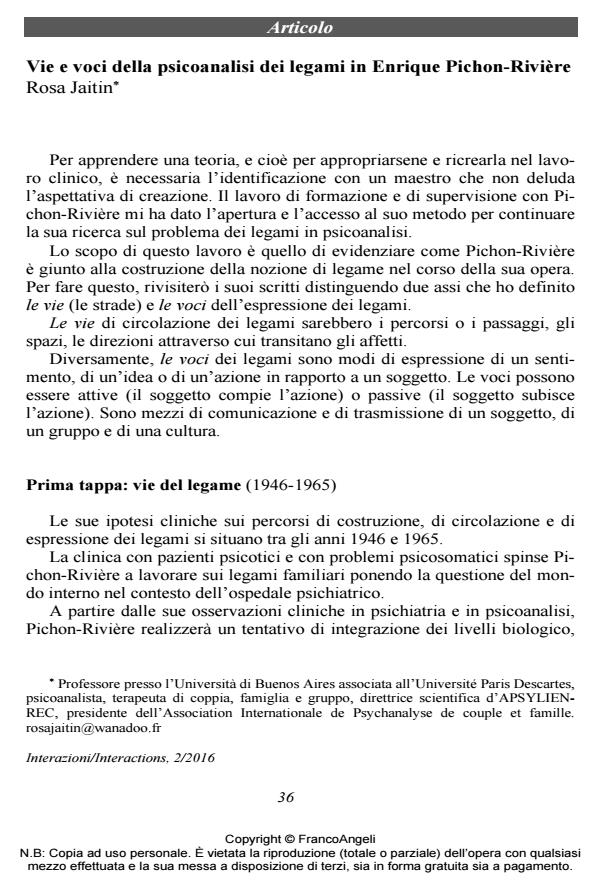Ways and voices of psychoanalysis of links in Enrique Pichon Rivière
Journal title INTERAZIONI
Author/s Rosa Jaitin
Publishing Year 2016 Issue 2016/2
Language Italian Pages 15 P. 36-50 File size 289 KB
DOI 10.3280/INT2016-002005
DOI is like a bar code for intellectual property: to have more infomation
click here
Below, you can see the article first page
If you want to buy this article in PDF format, you can do it, following the instructions to buy download credits

FrancoAngeli is member of Publishers International Linking Association, Inc (PILA), a not-for-profit association which run the CrossRef service enabling links to and from online scholarly content.
This article browses the work of Pichon Rivière. In the 50’s he introduced the hypothesis of the "link as a four way relationship" (of mutual love and hatred between baby and mother). It is the clinic of psychosis and of psychosomatic disease that questioned him on the urgent conditions of the mental disease; its areas of expression; the degree of symbolization and various fields of clinical observation. As from the 60’s, groupal and family clinic lead him to explore a second path directed towards the voices of the link, which of the internal family sub group, and the one of social and cultural voice, where the link develops. Then he defined the link as "bi corporeal and three-personal structure". Author puts together all the analysis levels of the link from a psychoanalytic process of the couple, of the second generation descendants of a genocide, which delimits the field of the transference and countertransference link. Body language, knot of the transgenerational link, absences and presences to the sessions mark a pace where appears the illusion which will transform the intersubjective link between the partners and with the analyst.
Keywords: Enrique Pichon-Rivière, unconscious links, voices and ways of the link, bi-corporeal-three-personal link, psychoanalytic couple therapy
Rosa Jaitin, Vie e voci della psicoanalisi dei legami in Enrique Pichon-Rivière in "INTERAZIONI" 2/2016, pp 36-50, DOI: 10.3280/INT2016-002005